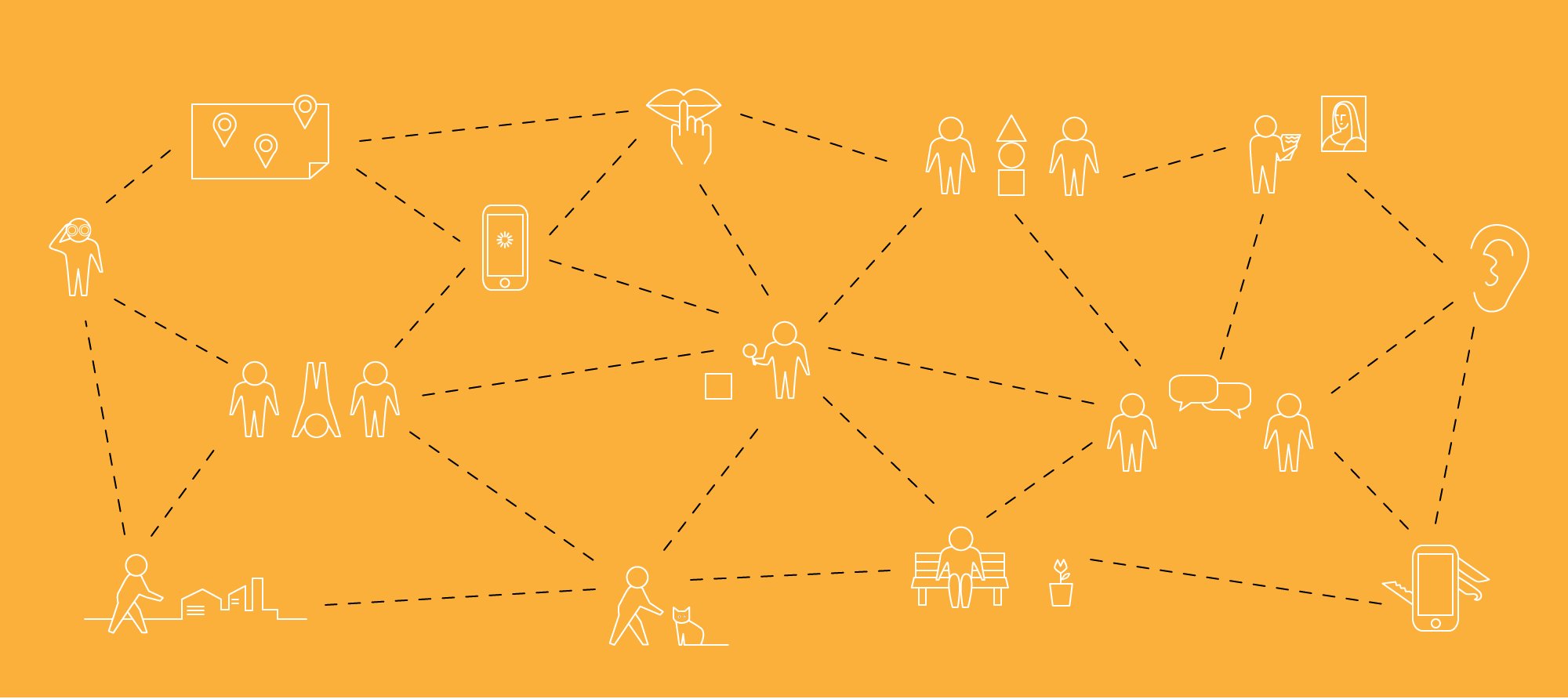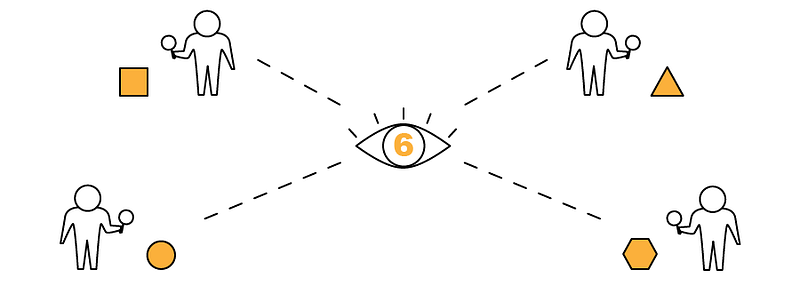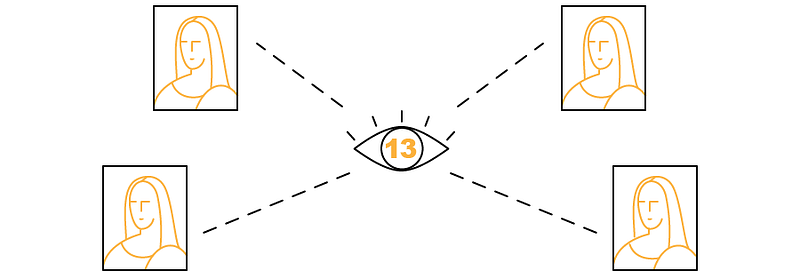meenaks: One of the most brilliant and useful articles I read in recent times – How to pay attention https://t.co/4Qb6KfYDP2


How To Pay Attention
20 Ways To Win The War Against Seeing
The class is called Point of View, and this assignment is a minor component, loosely tied to the process around a more significant project. I certainly believe that having an original, legitimate and honest point of view (for a designer or anybody else) involves cultivating the ability to see what others overlook. But the truth is that I include this assignment because it simply gets at a hobbyhorse of mine: our world has become an attention battleground.
From looming billboards to glittering shop windows to the myriad distractions flowing through the pocket-sized screens we carry everywhere, vast and sophisticated efforts prod us to look in specific directions, at specific things, in specific ways. Taken together, they add up to a kind of war against seeing. I try to be part of the resistance.
In fact, as a result of the class, I started to make an informal list of “how to pay attention” strategies — my own, those that students suggested, and others that I’ve read about or otherwise encountered here and there. To my delight, this list grew into something more than I’d anticipated, and started to take on the feel of something between a set of New Year’s resolutions, and a manifesto. Finally I decided that it seemed worth, as they say, sharing.
Not that I consider it complete, of course. Maybe you’ll have your own additions, tips, ideas, suggestions?

Conduct an overlooked-object scavenger hunt …
This is a habit of mine, and no doubt the accidental inspiration for the “practice paying attention” assignment. In fact, I think of this as self-assignment — study payphones in Manhattan (where are they clustered, where are they sparse, how many are broken?), security cameras around San Francisco (which ones are conspicuous and which are stealthy?), defaced Neighborhood Watch signs in Savannah, and so on. The point is to attend to some recurring thing that is ubiquitous, but that nobody is making any particular effort for me to notice.
Historian Matthew Frye Jacobson’s collection of “Space Available” signs is a great example of the same idea. And David Wondrich and Kenneth Goldsmith once took this sort of thinking to a delightful extreme by looking explicitly for flaws in the urban landscape — dinged signs, chipped architectural details, etc. — cataloging them under the title “Broken New York.”
I’ve had students suggest clever variations on this tactic that range beyond features of the built environment: studying facial expressions or tattoos, or paying conscious attention to the way people physically interact with money. Another student brought the idea indoors, checking country-of-origin information on products when visiting stores.
An important caveat: Whether this exercise — or anything on this list — results in some new piece of writing or project is beside the point, for me at least. Sometimes just making it a point to redirect my gaze makes me notice interesting things I wasn’t even looking for, and would surely have missed.

… or just a single-color scavenger hunt
If you can’t come up with a more specific feature or object, just pick a color. Several students have proposed variations on this idea, leading them to note the sheer variety of reds they encounter, or to spot peculiarities like head-to-toe green jumpsuits, or reflect upon the precise origins of a lifelong attraction to, say, yellow.

Spot something new every day
Another student, Gaïa Orain, focused her solution on a two-block walk she made every day, and that had long since become so routine she could have sleep-strolled it. So she made a conscious effort to “see something new” every day — turning this routine walk into a kind of open-ended game.

Change Perspective
Rona Binay and Richard Clarkson teamed up to turn their walk to the subway into their own odd but amusing game: He directed his vision upward toward the sky; she stared downward toward the ground. Apart from seeing differently, they had to rely on each other. (I was relieved to hear they did this relatively late in the evening, when the sidewalk wasn’t crowded.)

Reframe the familiar
Lucy Knops made portable frames, acrylic with a dry-erase surface: “Hold the frame up to an object or scene and write a one- to two-word description on it,” she suggested. “Then, shift the frame to focus on a different subject, leaving the original description.” Knops says her solution was partly inspired by the work of artist Robert Irwin, as described in Seeing Is Forgetting the Name of the Thing One Sees, by Lawrence Weschler. Irwin’s work famously evolved away from making traditional art objects to a focus on the experience, and shaping the context, of seeing — “allowing people to perceive their perceptions,” as one passage in the book puts it.

Walk with an expert
Alexandra Horowitz built her enjoyable 2013 book On Looking around this idea: Covering territory she considered familiar, but with experts on typography, plant life, public space, geology, etc. All were only too happy to help her see the world through their eyes — things invisible to her, but obvious to them.

Talk to a stranger
This hadn’t occurred to me as a form of paying attention, but at least two students have used the tactic. One was motivated by a more general determination to break his usual routines. So when an elderly woman directed a comment at him about all the trash on the street — the kind of thing most of us nod at vaguely and tune out — he engaged. Another student was more impulsive, striking up a conversation with the woman in front of him at a post office. (Surprisingly, it turned out she regularly goes out of her way to reach this notably busy station, because she likes the staff.) “She was the nicest person that I’ve met in New York,” he reported.
Radio producer Aaron Henkin once conducted a more elaborate, and structured, version of engaging with strangers. His goal: “to meet and interview everybody who lived and worked on one city block in Baltimore.” The result was an audio documentary — and a lot of lessons learned about talking to strangers. Read about his project here.

Let a stranger lead you
Thinking about strangers reminds me of Vito Acconci’s well-known “Following Piece,” performed over a period of weeks in 1969: Daily, he would pick a random person, and follow her or him around New York. This would continue until his subject entered some space Acconci could not (a residence, for instance, or a car that promptly departs). In one case, this meant sitting through a movie when the person he was following went to the cinema. The exercise could last a few minutes, or hours, depending on what the stranger happened to do. I doubt Acconci would characterize his goals as having much to do with “paying attention,” per se, but borrowing his practice would be an adventure in seeing the new.

Take a day-long walk through an unfamiliar part of town
Or you could make a more controlled effort to change your surroundings. This self-explanatory idea (which I suppose may work in some cities better than others) is inspired by I’m Just Walkin’, a project that documents the systematic wanderings of a guy who has set out to walk every single street in New York City.

Poeticize the irritating
“One of my favorite things to do,” poet and artist Kenneth Goldsmith (one of the “Broken New York” explorers mentioned above) observes in his book Uncreative Writing, “is to walk a few steps behind two people engaged in conversation for several blocks.” That sounds supremely annoying. But Goldsmith takes a cue from John Cage’s contention that music is everywhere if you just learn to listen for it. “Poetry is all around us,” Goldsmith writes — and that includes the poetry of two strangers blabbing, their conversation “punctuated by red lights, giving the speech a certain pace and rhythm.” The same applies, he continues, to the many cellphone talkers who seem to be contributing nothing but noise to sidewalks and airports everywhere: “I like to think of it as a release, a new level of contextual richness, a reimagining of public discourse, half conversations resulting in a breakdown of narrative, a city full of people spewing remarkable soliloquies.”

Look slowly
Robert Irwin, the artist mentioned above, shaped his practice in part by spending insane-sounding amounts of time simply looking — at his own paintings, at rooms, at outdoor settings. “Slow Art Day” is an annual event at multiple locations around the country that picks up this spirit in a perhaps more manageable form: Participants meet at a museum and “look at five works of art for 10 minutes each and then meet together over lunch to talk about their experience,” the event’s site explains. “That’s it.” The next Slow Art Day is Saturday, April 11, 2015 — learn how to participate here — but of course the core idea can be adopted any time, and applied to subjects other than art works.

Look really, really slowly
Educator Jennifer L. Roberts has described an assignment she’s used in art history classes as making students regard a single work for “a painfully long time.” This seems to mean three hours, which does sound like a challenge (although it’s nothing compared to the time Irwin spent studying canvases, en route to concluding, in essence, that canvases were beside the point). The task — “noting down his or her evolving observations as well as the questions and speculations that arise from those observations” — is meant to be the first step in a research process. But Roberts argues, persuasively, that it’s a highly useful step. Students resist, but eventually find that looking really slowly forces them to notice things they had initially missed. “What this exercise shows students,” Roberts writes, “is that just because you have looked at something doesn’t mean that you have seen it.”

Look repeatedly
In a 2012 essay in The New York Times, culture reporter Randy Kennedy describes a decade or so of looking, again and again, at Caravaggio’s “The Denial of St. Peter.” The painting hangs in the Met, which Kennedy has occasion to visit often, and taking (yet) another look at this painting has become part of his routine every time. Over the years, his entire view of the work, and its true subject, has evolved. “One result of looking at a painting so long that you can see it in your mind’s eye is that it does, in a very real sense, become your own,” he writes, “not quite the same painting that anyone else will see.”

Repeat your viewpoint
Steve Hamilton, another Products of Design student, noticed a bench not far from our classroom “that no one sits on.” So he made a habit of sitting on it, for 15 minutes a day, and studying passersby (taking advantage of the extra view offered by the reflective building opposite). Bottom line: “Always take advantage of the incongruous bench.”

Just Listen
Several students have suggested listening-related strategies for paying attention. One described concentrating on nighttime sounds, and naming or identifying them. Another focused specifically on birds, particularly while in his own apartment — an explicit effort to connect with the outdoor world. A third listened to her own breathing, while walking or subwaying or otherwise traveling the city. Doesn’t this invert the assignment, paying close attention to the self to the point of tuning out the world? “We navigate through a lot of noise,” she countered, “so trying to take a moment to clear the mind helps refocus.” (At one point she did this so effectively that she missed her subway stop.) And a fourth chose to zero in on “ambient sounds” — the minor rustling of a plastic bag caught in a tree, for instance. Usually, she added, incidental noises are an irritant to her, but actively seeking them flipped her perception.

Soundmap
As part of a course he teaches on sound in the media landscape at the Academy of Art in San Francisco, Marc Weidenbaum has led his students on a “soundwalk.” Following this “docent tour of everyday reality,” he gives them a related assignment: mapping three sounds in a two-block radius of their classroom. They’re asked to “pin” the sounds’ origin points on a digital map, and then “write up for each spot a sentence or two in which you (1) describe the sound and (2) note the sound’s meaning, utility, function, or some other aspect.” (The same thing could of course be done with smell.)

Follow the quiet
For the PBS Digital series Art Assignment, Jace Clayton (DJ Rupture) offered these instructions: 1. Go outside and walk in the direction that is the quietest. 2. Continue until you’re in the quietest place possible.” 3. Take a moment to absorb it.”
(He further instructs documenting the place and uploading that documentation, tagged #theartassignment, but that part varies from my purpose here. Art Assignment is a cool show, and may inspire other ideas, but it’s about making things. It’s fine to make documentation a part of these assignments, or to figure out ways to build on what you’ve seen in future creative endeavors — but that shouldn’t be the entire, or even primary, point.)

Look at anything besides your phone
Predictably, technology denial has been a recurring theme among my Products of Design students. For one, the mere act of skipping headphones counted as a step toward fresh engagement with the world; another mentioned putting her phone on “airplane mode” for an hour a day; another fiddled with the color resolution on his computer screen in a way that somehow discouraged him from checking Facebook.
If those ideas strike you as inadequate, well, educator Andrew Reiner has described a far more draconian version that he’s assigned to his students: “Eat in a crowded university dining room without the company of school work, laptops or smartphones. Or friends.” His goal involved teaching them something about intimacy, connection, and vulnerability in the social-networking era. (Evidently many students were unnerved, feeling “judged” and “self-conscious.”) I don’t know about that. But if you think of this exercise as less about avoiding technology and more about a prompt to see things nobody else is prompting you to see, it has potential.

Misuse a Tech Tool
This has been another recurring theme. One student used a chat/dating app designed for gay men to (“obsessively”) monitor the number and locations of users within 400 feet. Another used the macro filter on her digital camera to study the textures of street objects on her walks to and from school. A third started using the compass on her iPhone to orient her gaze — wherever she walked, she’d take a look toward true north, and whatever happened to be there, “introducing a degree of randomness into what I saw.”

Care for something
I’ll close with an idea from Miguel Olivares, who presented his solution with a near-apology, worrying aloud that he’d misunderstood the assignment: He’d made a planter for a cactus, on the theory that “by nurturing or caring for something, you pay more attention to it.”
Actually, he’d actually nailed it. For starters, there are countless ways to define “paying attention,” and even this list must be woefully incomplete. (In fact, the list is meant to be a start, not a conclusion.)
And really, caring is at the heart of this assignment. The goal of fighting back in the war against seeing is precisely to decide what you want to care about — and thus what you want to care for. A good goal for the year ahead.
